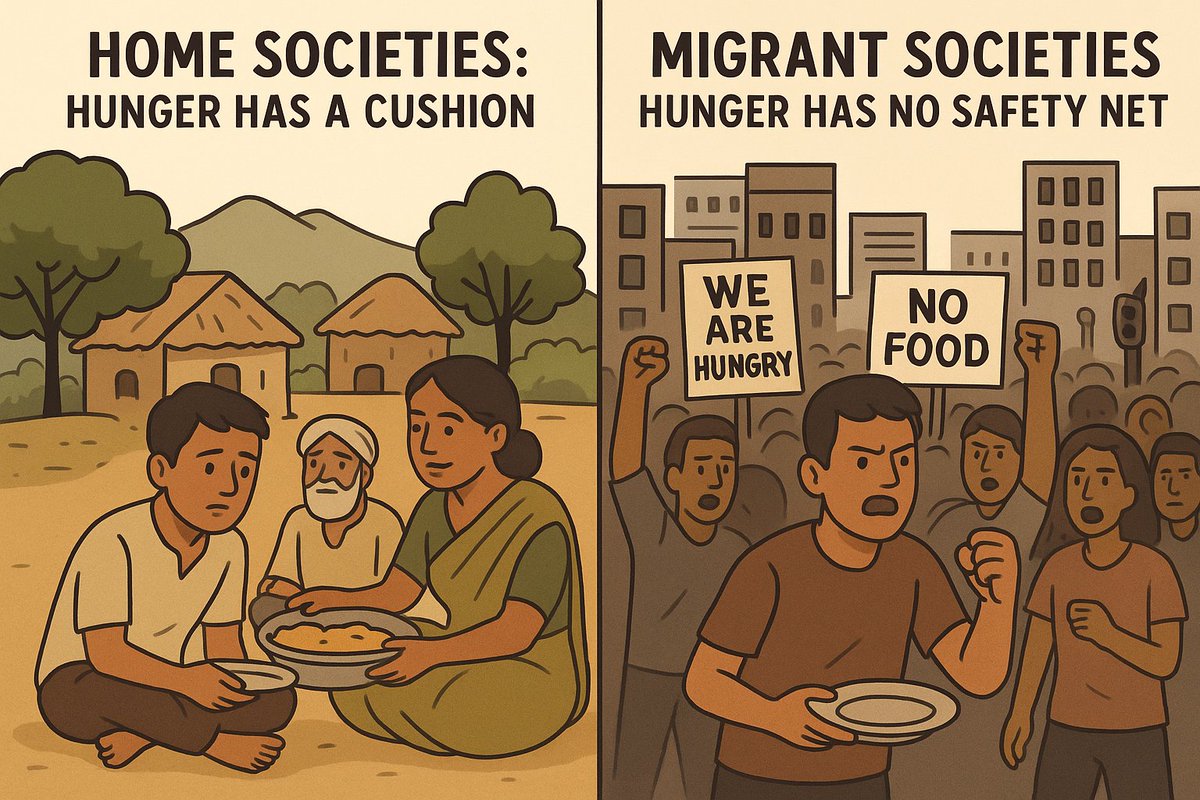
🛖 Home societies: hunger has a cushion
In many home countries, extended family and communal ties work like invisible welfare systems. If someone is hungry or out of work, they can turn to cousins, uncles, or village elders for food, shelter, or small loans. These networks are rooted in kinship, reciprocity, and trust built over generations.
🏙️ Migrant societies: hunger has no safety net
For migrants, whether in sprawling cities or diasporic communities abroad, those ties are weakened or lost. Families are scattered, neighborhoods anonymous, jobs precarious. When desperation hits, there’s no uncle to call, no village to lean on. The street becomes the only option.
🔥 Why protests erupt
This is why food riots and protests often break out not in the poorest rural villages, but in migrant-heavy urban slums. It’s not about who is poorest in absolute terms: it’s about who has had their coping mechanisms stripped away. Hunger here doesn’t stay private; it spills out collectively.
🧩 The invisible glue of stability
Social stability isn’t just about income levels. It’s about the invisible infrastructure of trust, kinship, and mutual aid that helps people survive when the state or market fails. Remove that glue, and hunger becomes a spark.
